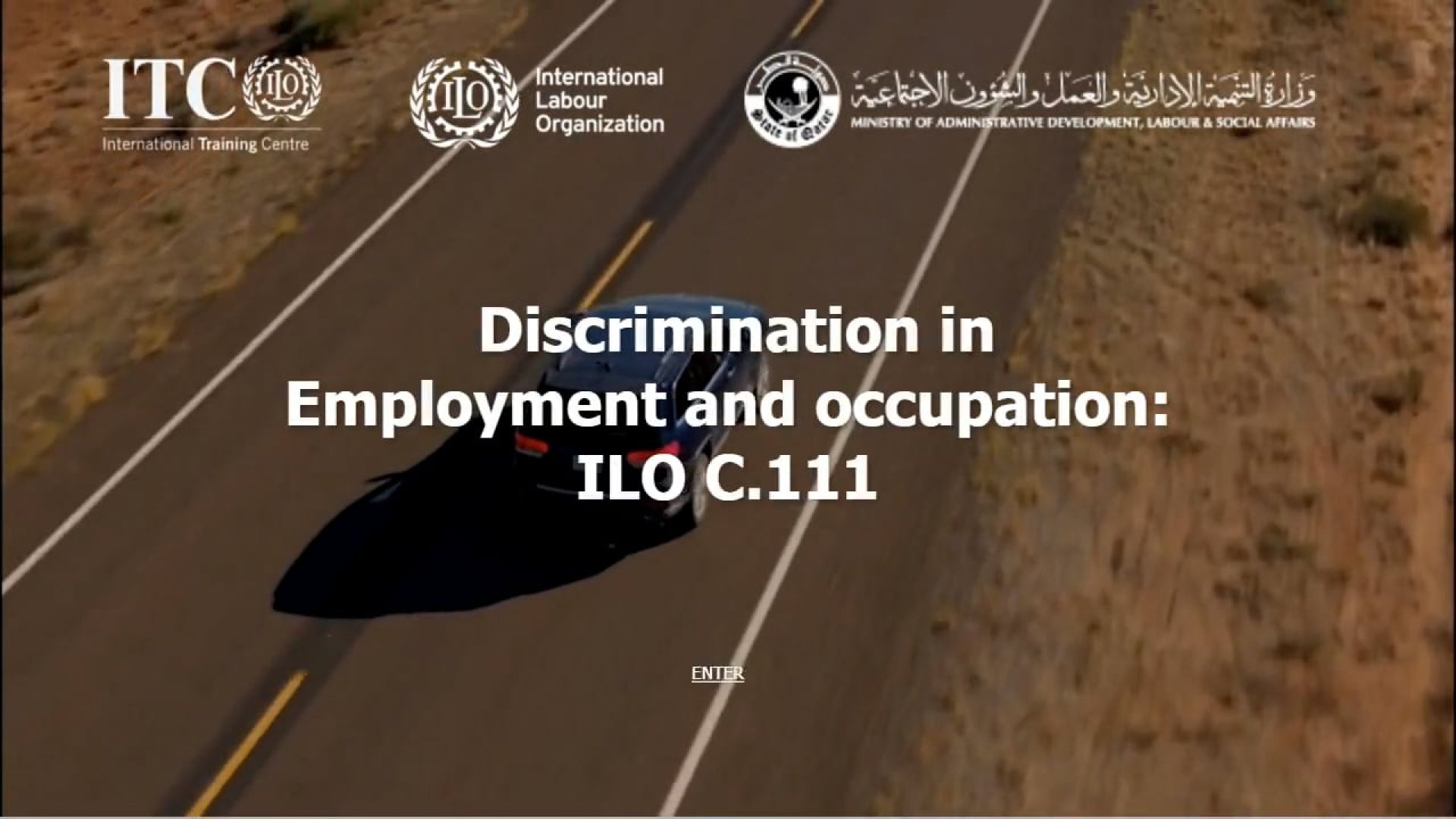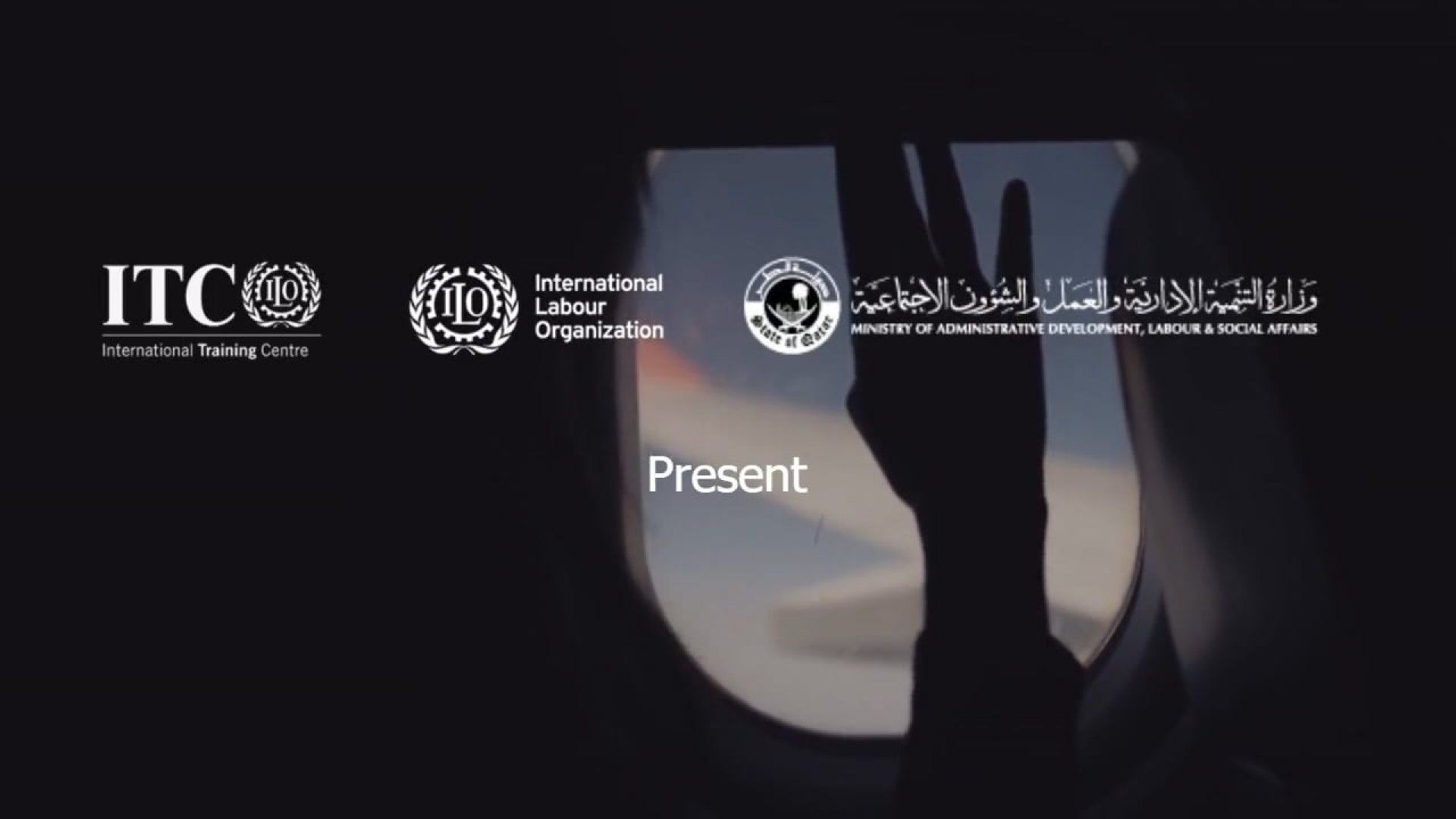Discrimination, violence and harassment: self-guided learning on ILO conventions No. 111 and No. 190

Gratuito
Discrimination, violence and harassment: self-guided learning on ILO conventions No. 111 and No. 190
Autoguiado
O curso está disponível em English, العربية (Arabic Flyer)

This training programme was sponsored by the ILO and developed in close collaboration with the Qatar’s Ministry of Labour. It provides both theoretical and practical knowledge about Discrimination, Violence and Harassment, through the lens of key international Labour Standards.
Key features
MODULE 1
Discrimination in Employment and Occupation: ILO Convention No. 111
MODULE 2
Violence and Harassment in the World of Work: ILO Convention No. 190
Introduction to the course
This self-guided learning experience will literally take you through an immersive journey. First you’ll be driving through the Qatari desert and urban environment: your route will be scattered with road works, unexpected diversions and unforeseen events, just like the employment trajectory of certain individuals may be disrupted and slowed down by discrimination and inequalities, based on their individual characteristics.
After rehearsing and practicing how to identifying and tackle such obstacles through exercises and simulations, you will finally get to the Airport, where your will take off towards the second part of your journey.
You will land in the modern city of Doha and head off to a very special exhibition, exploring the different facets of violence, harassment and unacceptable behaviour in the world of work, through a gender perspective and beyond.
Again, before you successfully conclude your tour, collect all your exhibition badges and head back out in the Gulf’s sun, you’ll have the chance to practice and simulate how to prevent and effectively respond to such terrible phenomenon.
Who attends this course?
- Governments (especially Ministry of Labour) and public authorities;
- Workers and their representatives;
- Employers and their representatives;
- HR and CSR professionals;
- Civil Society Organisations;
- Gender and non-discrimination practitioners.
What will I learn?
Here are some of the topics covered in the programme:
Discrimination:
- Discrimination: definitions, types, root causes and possible grounds;
- A Human Rights obligation: the international and regional legal framework;
- The benefits of addressing discrimination and the costs of non-intervention;
- The scope of C.111: how to address discrimination, roles and responsibilities.
Violence and Harassment:
- Violence and harassment: definitions, scope, causes and risk factors;
- The human rights framework, the gender dimension, the added value of C.190;
- Impact, costs and benefits of eradicating this phenomenon;
- The transformative framework for action set out by C.190
What will I be able to do?
At the end of this learning journey, you will have:
- acquired the language and core principles applied by the Convention and Recommendation;
- identified key provisions towards preventing and eliminating discrimination at work;
- applied key non-discrimination principles to the context of Qatar and the environment you operate in;
- Strengthened your ability to recognize and deal with discrimination in your daily activity.
How is the course organized?
Each module will require 90 to 120 minutes of your time (depending on how many of the practical exercises you will choose for your practice) and will consist of:
- An introduction page explaining the learning objectives and laying out the Module's content map;
- The free-navigation interactive learning package, inclusive of built-in knowledge checks;
- A feedback box, where you can tell us about your learning experience and help us improve it.
Upon successful completion of all the steps, you will receive a certificate of participation as well as digital credentials to share on social media.

